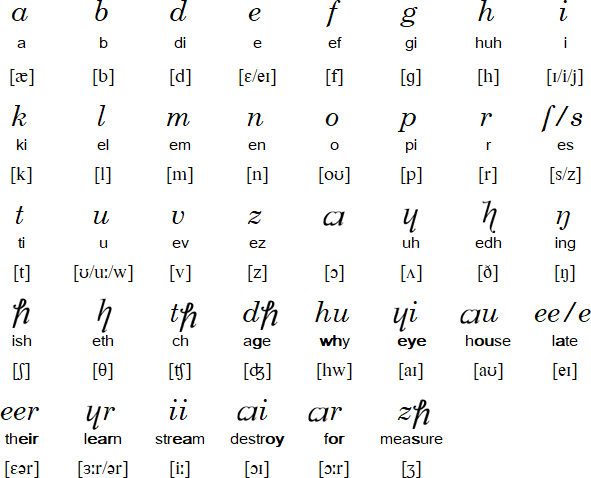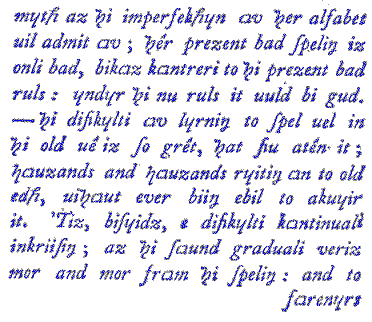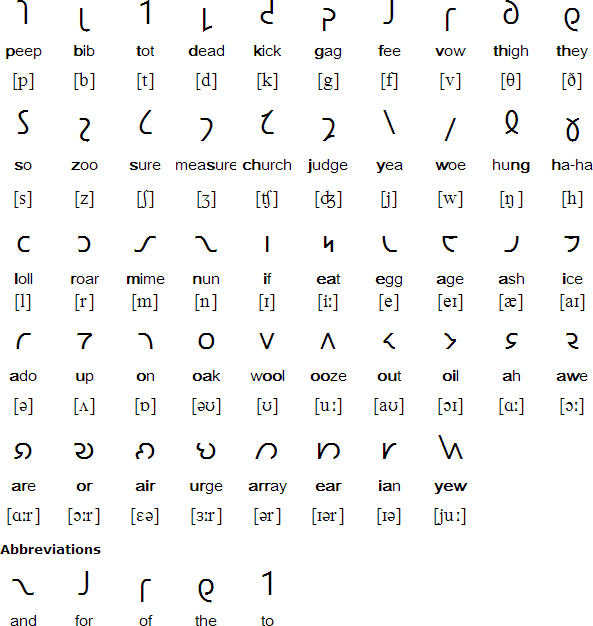http://www.omniglot.com/writing/franklin.htm
Benjamin Franklin's Phonetic Alphabet
Benjamin Franklin took great interest in the promotion of spelling reform. While living in London in 1768 he wrote A Scheme for a new Alphabet and a Reformed Mode of Spelling in which he proposed a fairly accurate phonetic system for spelling English. The alphabet was published in 1779 in Franklin's Political, Miscel*laneous, and Philosophical Pieces.
His new phonetic alphabet consisted all the lowercase letters of the Latin alphabet, minus c, j, q, w, x, and y, which he thought redundant, plus six new letters for sounds which he thought lacked unambiguous orthographic representation. The other letters all adhered to the principle of one symbol (or unique digraph) per one sound.
Franklin commissioned a type foundry to prepare a suitable type including for the 6 new letters, but soon lost interest in his alphabet. The only other person to show an interest was Noah Webster.
Notable features
- Double vowels represent long vowel sounds, e.g. aa = [ a: ] and ii = [ i: ].
- Only one accented letter appears in the alphabet: ê, which represents the a in mane and lane.
- Consonant combinations are used to represent such sounds as the ch in chew and the j in jaw.
Franklin's Phonetic Alphabet
Sample text
Transliteration
Much as the imperfections of the alphabet will admit of; the present bad spelling is only bad because contrary to the present bad rules: under the new rules it would be good -- the difficulty of learning to spell well in the old way is so great, that few attain it; thousands and thousands writing on to old age, without ever being able to acquire it. 'Tis, besides a difficulty continually increasing; as the sound gradually varies more and more from the spelling: and to foreigners.
Links
Benjamin Franklin's description of his alphabet
http://www.historycarper.com/resourc...3/phonetic.htm
Further details of Benjamin Franklin's alphabet
http://www.childrenofthecode.org/cod...y/franklin.htm
http://www.foolswisdom.com/~sbett/franklin-webster.htm
Site Information
About Us
- RonPaulForums.com is an independent grassroots outfit not officially connected to Ron Paul but dedicated to his mission. For more information see our Mission Statement.







 Reply With Quote
Reply With Quote Being a press operator, Franklin would've known more than enough about type and fonts to create the characters.
Being a press operator, Franklin would've known more than enough about type and fonts to create the characters. 




Connect With Us